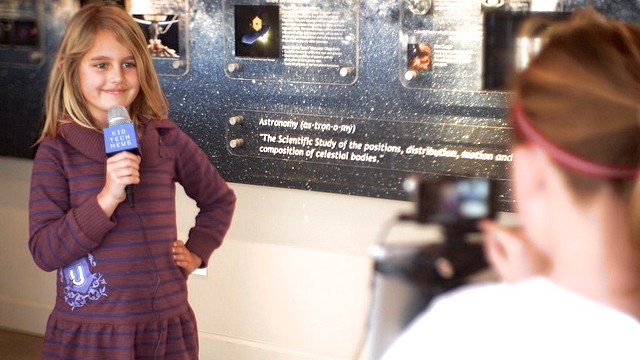
Part 4 in the series Learning In the New Economy of Information.
We live in a world where we are constantly connected to information. This vast ocean of information, the best knowledge of mankind -- almost all of it -- can be accessed at any time in just seconds. But simply being able to access information is not all that impressive. It in no way means that we can understand the information, evaluate it, or grasp its implications. Possession of facts is not learning. What is an important skill is the ability to sift through abundant information, identify what is valid and meaningful, then use it to create meaning and express it. This is why student creation is so important in the new economy of information.
Jason Dvorak, who was teaching a unit on “Sensation and Perception” in his high school psychology class, had planned to first lecture, then have his students evaluate visual examples that he created to represent each concept from the lesson. They would then decide as a group which concept they represented. But Dvorak’s classes had just been given iPads as part of a pilot program, and because the school’s emphasis was on student creation and making use of these tools, he knew that he had to reconstruct the lesson. In the new iteration, the students were tasked with research and the creation of their own unique visual representations of those key concepts. Once the images were complete, the students reviewed and evaluated them as a class, discussing the strengths and weaknesses of each and suggesting ways to improve them. Throughout the lesson, Dvorak monitored the discussion, adding nuanced detail and keeping the focus of the discussion on the ultimate learning objective, but the real work was done by the students.
This constructivist approach, as outlined by Dennis Jonassen in his 8 Characteristics of Constructivist Learning, values hands-on and experiential learning that allows students to create multiple representations of ideas. The variety of examples that they create prevents oversimplification and allows students to address topics in their complexity. The emphasis on constructing knowledge, rather than reproducing it, is not only effective at revealing comprehension, but also the misapplication of concepts and ideas. In Dvorak’s class, the examples were not without their flaws. Dvorak used this reality to have a discussion that evaluated and identified the strengths -- and just as importantly -- the weaknesses of their work. In many cases, that happened without the teacher having to point out the misapplication since students were able to evaluate and give feedback during the discussion.
